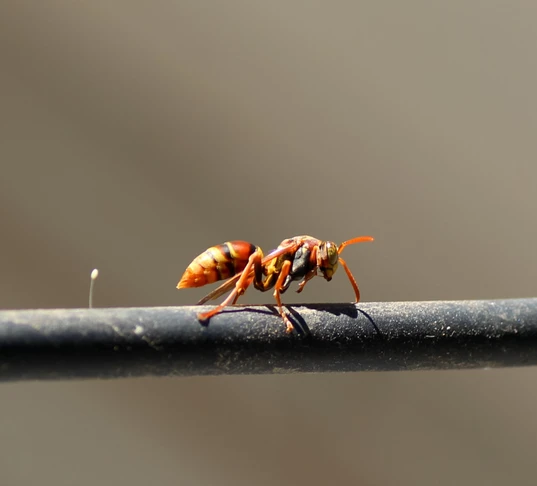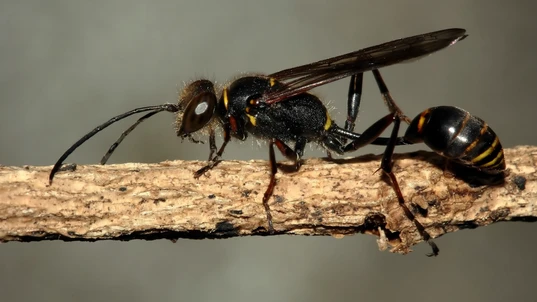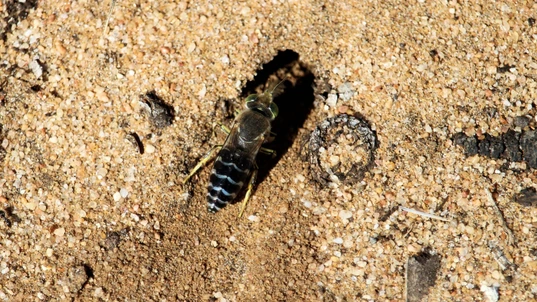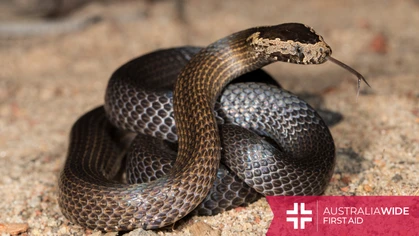5 Most Common Wasps in Australia

Bites and Stings

Paper Wasps are widespread throughout Australia.
Australia is home to a diverse range of insect species, including several types of wasps. While some wasps are beneficial as predators of other pests, others can pose a threat due to their stinging capabilities. We will explore the five most common wasps found in Australia, providing information on how to identify them, their range and location, whether they sting, and essential first aid treatment for their stings.
European Wasp (Vespula germanica)
European Wasp (Vespula germanica)
The European wasp, commonly known as the German wasp, is one of Australia's most common and aggressive wasps. They are medium-sized wasps, measuring around 12-20 mm in length, with bright yellow and black stripes on their abdomen. Range/Location: commonly found in urban areas, gardens, and picnic spots across southeastern Australia, including New South Wales, Victoria, and Tasmania. Sting Potential: European wasps are known for their painful sting and are capable of stinging multiple times. If stung, individuals may experience intense pain, redness, and swelling. It is important to seek immediate medical attention if a severe allergic reaction occurs.
Brown Paper Wasp (Polistes)
Paper Wasp (Polistes spp.)
The paper wasp is a common variety found in Australia, characterized by its slender body and long, dangling legs. They come in various colours, including brown, red, and black, and can measure between 10-20 mm in length. Australia is home to Native, Asian, and European paper wasps. Range/Location: Australian Paper Wasps are widespread across mainland Australia, including urban and rural areas. Sting Potential: While they are generally non-aggressive and only sting in self-defence, provoking a paper wasp nest can lead to multiple stings. Their sting is painful but not usually dangerous it causes pain, swelling, and redness, except for individuals with allergies.
A male Common Paper Wasp (Polistes variabilis)
Australian Native Paper Wasp
Australian Paper Wasps have a slender body, typically measuring 15-25mm in length. They are reddish-brown to black, with yellow or orange markings. Their nests are papery and often attached to sheltered structures or trees. Range/Location: Australian Paper Wasps are widespread across mainland Australia, including urban and rural areas. Sting Potential: Australian Paper Wasps can sting if they feel threatened, but they are generally less aggressive compared to other wasp species. Their sting is painful but not usually dangerous, except for individuals with allergies.Looking to get you First Aid knowledge up to date?
We run certified First Aid courses throughout all major Acustralian citys. Find a location near you.

Black and yellow mud dauber invasive wasp (Sceliphron curvatum)
Mud Dauber Wasp (Sceliphron spp.)
Mud dauber wasps are solitary wasps that construct nests from mud. They have long and slender bodies, usually black or brown in colour, and measure around 10-25 mm in length. Range/Location: Mud Dauber Wasps can be found throughout Australia, including urban and rural areas. They are commonly seen around buildings, fences, structures, gardens, and rural environments throughout Australia. Sting Potential: Mud Dauber Wasps are generally non-aggressive unless a severe allergic reaction occurs and rarely sting unless directly handled or threatened. They are considered beneficial due to their hunting of spiders, which they use to provision their nests.
Sand Wasp
Sand Wasp
The Sand Wasp is a non-aggressive wasp that has a tendency of hovering close to people's faces attempting to catch flies. They are often yellow and black, or white and black, with a pale green banded pattern. Range/Location: Sand wasps make their solitary nests in sandy soil. They can be found in woods, woodlands, and urban areas around Australia. Sting Potential: Sand wasps can deliver a painful sting if their nest disturbed.First Aid Treatment for a Wasp Sting
When a wasp sting injects venom into the skin, causing varying reactions. Most people experience localized reactions at the sting site, such as pain, redness, swelling, and itching, which usually resolve within a few days. In some cases, large local reactions may occur with significant swelling and redness extending beyond the sting site. These reactions can be more uncomfortable and take longer to heal. Allergic reactions can occur, resulting in generalized itching, hives, difficulty breathing, dizziness, and swelling in different body parts. It's crucial to treat these reactions seriously and seek immediate medical attention, as they can be life-threatening. To provide first aid treatment for a wasp sting, follow these steps:- Calm and reassure the person who has been stung. Encourage them to stay calm to minimize anxiety or panic.
- Wash the sting site with soap and water. Gently clean the area to remove dirt and bacteria, reducing the risk of infection. Unlike a bee sting, the wasp's stinger does not remain on the skin.
- Apply a cold compress to the sting site. This helps reduce pain and swelling. Use a cold pack or wrap ice in a cloth before applying it to the area. Keep away from direct skin contact to prevent frostbite.
- Consider using hydrocortisone cream or calamine lotion. Apply a thin layer to the sting site to alleviate symptoms like redness, itching, or swelling.
- Monitor the person for signs of an allergic reaction. Watch for any severe symptoms such as difficulty breathing, dizziness, or swelling of the face, throat, or tongue. If these symptoms occur, it may indicate an allergic reaction and immediate medical attention is necessary. Call Triple Zero (000) for an ambulance and follow the Australian Resuscitation Council's anaphylaxis treatment guidelines.
Conclusion
In the grand tapestry of nature, wasps hold a significant place. They play a vital role in our ecosystem, contributing to the delicate balance of life. Awareness of the five most common wasps in Australia is crucial to our safety. By staying informed and taking necessary precautions, individuals can minimize the risks associated with wasp encounters and safely enjoy the Australian outdoors. Keeping your first aid skills up to date ensures you are always prepared to help those affected by wasp stings. Renew your certificate now!
Originally published at
https://www.australiawidefirstaid.com.au/resources/5-common-wasps-in-australia
as part of the Australia Wide First Aid Articles Library









